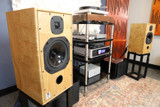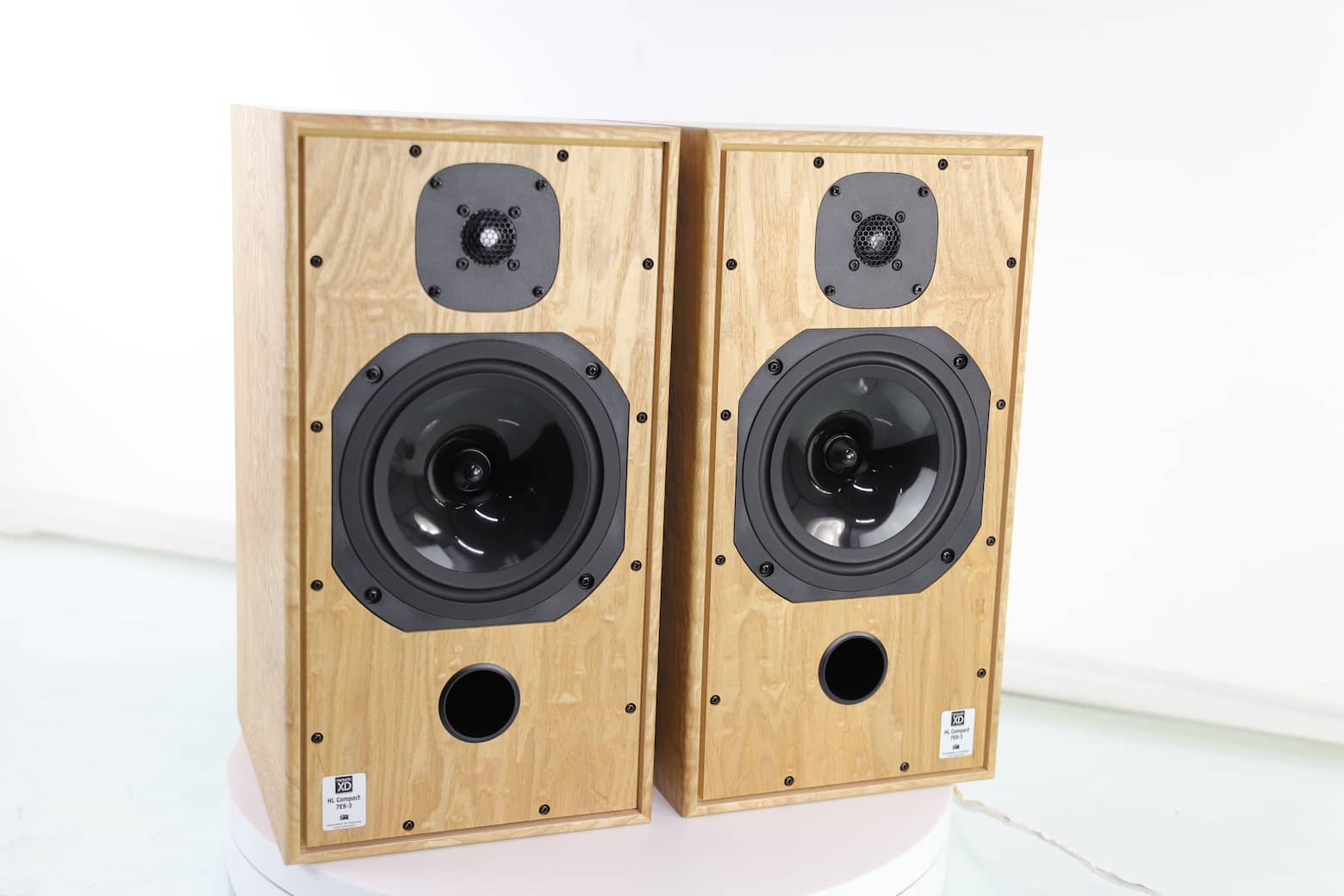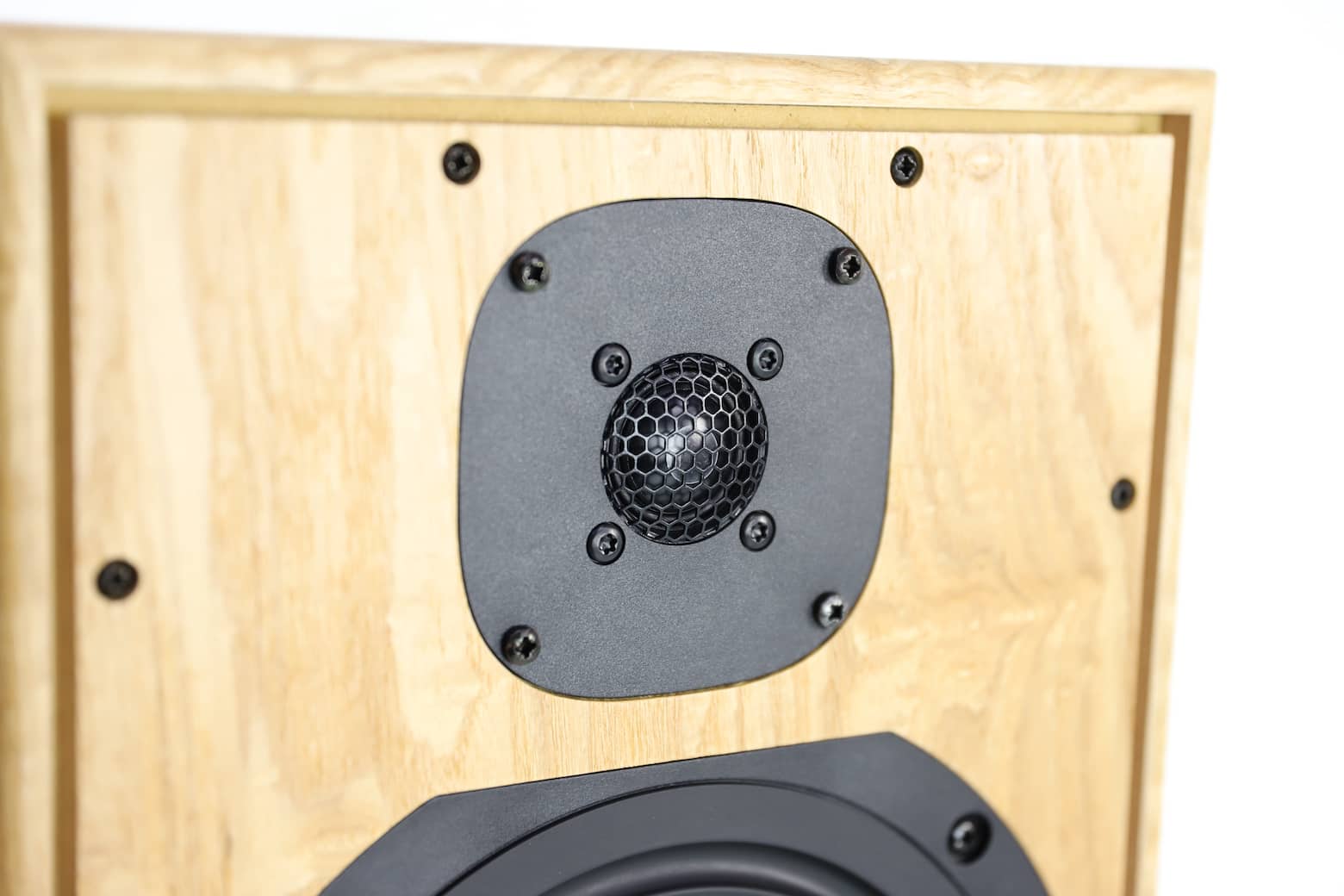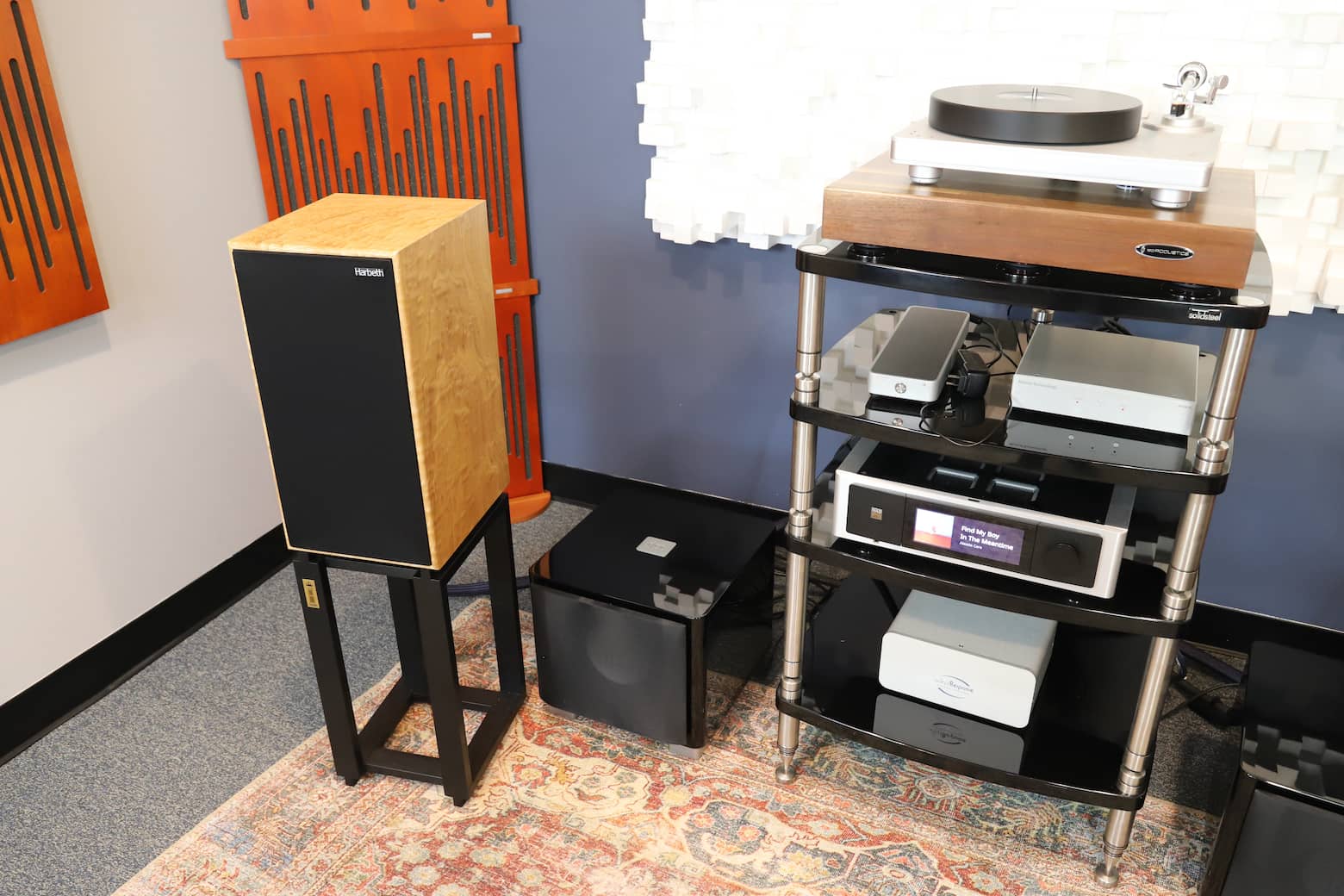Harbeth C7 ES-3 XD: Allen Shaw's Favorite Speaker

Longtime TMR blog readers will know I have a personal soft spot for Harbeth loudspeakers. I was a fan long before The Music Room became a dealer for the iconic speaker maker. Type 'Harbeth' into the search field on our site and click on content, and you’ll get the idea. Besides last year’s write-up about the company's history, you can see I've glowingly mentioned the brand again and again throughout my years at TMR whenever choice speaker pairs of theirs became available.
For many people, the brand epitomizes the audiophile experience. In this blog post, I'm taking a crack at defining the listening experience with the one Harbeth speaker that legendary Harbeth designer Allen Shaw calls his favorite. Considering the company’s sales approach, which organizes its products by how you use the speaker rather than by price, Shaw’s favoritism says a lot and indicates broad appeal.

Of all the Harbeths, the Compact 7ES-3 XD and the Compact 7ES-3 XD 2 are speakers that fit into the most listening situations and rooms and instantly deliver the sound Harbeth is known for. The alluring and revealing sonic character comes from a combination of industry-leading crossover work, a slow design pace, and an intense focus on precision, along with a borderline obsession with driver construction and matching.
Standards at Harbeth are higher than just about any speaker brand we come in contact with here at The Music Room, with the brand’s “B-stock” products fitting “A-stock” description for nearly anyone else. That drive for perfection and accompanying consistency have kept Harbeth at the forefront of the HiFi hobby for decade after decade.
The C7ES3, which most folks call the C7, started its life in the lineup known fully as the HL Compact 7. Introduced in 1994, the Compact 7 has been continually improved and developed since, including the addition of ES3 to the name, culminating in the current XD, or "extended definition," suffix. In the midst of that development, certain upgrades were introduced to commemorate the company's periodic anniversary milestones. Many of these were finally made into the stock offering for the current XD edition, paving the way for the subsequent anniversaries of this long-lived company.
At just 25 inches tall, it sits right near the middle of Harbeth's lineup of speakers, in both size and output capability. The story of this speaker has always been that it’s easy — easy with placement, easy to drive, and easy on the eyes and ears.
However, underneath the easygoing attitude is the classic high level of resolution and accuracy that Harbeth is known for. Without going too deep into the company's history here, the short of it is that the Harbeth origin story best explains why they sound the way they do. If you’re curious to learn more, I wrote about the timeline and history behind the legendary brand in a blog post last year.

Because the company was founded on the research and development of the BBC by a chief BBC engineer (who also happened to own the patent for polypropylene — no big deal), the design goals were similar to the broadcasting megalith: reproduce the human voice as perfectly and accurately as the state of the art will allow. If the state of the art can’t get it done, reinvent the state of the art.
Accurate and realistic vocal reproduction is one of the hardest things to get right in speaker design. Much harmonic nuance accompanies a human voice, and critical listeners are likely more familiar with a voice than, say, the tympani onstage at the Met. Not that the tympani at the Met don't sound fantastic on them, but convincing a listener that a recording of someone they know is not actually a recording is a challenge that requires perfect impulse and power responses, and a flat frequency response from the speakers. All Harbeths are designed to this exacting standard. And this type of neutrality in design serves every type of music rather than highlighting one genre over another.
Within that paradigm, however, Shaw and his design team can tease out two primary flavors of sound astride that exacting line. The C7ES3 XD, in contrast to the M30.3 XD or M40.3 XD for example — M standing for studio Monitor, after all — leans just a bit on the fun side of the line set for vocal honesty and purity. Anyone with a chance to listen to the M line of Harbeth speakers and compare them to the C7 might find the monitors fill the room with light, whereas the C7 is 80% on the dimmer. The Compact 7’s presentation is just a tad more romantic and engaging. The P3ESR is similarly easygoing, allowing just about any recording to shine, and the larger Super HL5s are always ready to rock & roll.

But see, most folks use this comparison to characterize the C7s, emphasizing that they’re not “studio monitor” speakers. And I think this is where this story gets a little lost sometimes, by failing to describe the speakers truly. Yes, the C7ES3 XDs are fun, and they make poor recordings a touch less painful, but the supreme detail retrieval they’re capable of, and the dynamics and imaging they pull off, still make them absolutely capable atop a mixing console or in a mastering studio. Nothing in the Harbeth speaker line strays far from the ultimate standards of “high fidelity.”
To my ears, Harbeth’s “fun” speaker is another brand’s reference monitor, because their approach is just different. Yes, in contrast to Harbeth’s “clearest window in audio” (my phrase), ultra-resolving M30s or M40s, the C7 is a bit of a different bird. But it's an entertaining and enjoyable bird with a pretty darn clear view of itself.
The C7ES3 is Harbeth's most accessible, charming, and affable character in the bunch. Just don't let that description lead you to believe it's not an elite audiophile contender. It absolutely is, and I know a certain famous British speaker designer who would agree. The C7 has its maker by the heartstrings, and after plenty of listening, it's got me by mine as well.
I like them so much, I even made a video going more in-depth with them, which you can watch below. Don't forget to like and subscribe so you don't miss any of our videos, which are always so much fun to make.
Articles and More Gear From Harbeth
For more on Wilson speakers, read:
- Harbeth 40.1 Review — Big-Room Magic, Audiophile Detail, and Surprising Dynamics
- Harbeth Compact 7ES-2 Review: Why These British Monitors Inspire Quiet Obsession
Looking for a used Harbeth? Browse models like the Monitor 30.2 and the P3ESR that have passed through TMR’s consignment and trade-in program — all thoroughly tested, certified, and ready for reference-level performance.
- Harbeth M 30.1 35th Anniversary Bookshelf Speakers
- Harbeth P3ESR XD2 Bookshelf Speakers
- Harbeth Monitor 30.2 XD Bookshelf Speakers
Rediscover the Joy of Listening.
Join our community of music lovers who get Sunday system tips, new arrivals, and deep-dive HiFi insights from The Music Room.
